HOW PLANT COLLECTION IS DONE
Below you can see an thumbnail abridged version of the process I am using to collect and preserve plant specimens for the inventory project. These spaces do not allow for a complete discussion; for more detailed information please consult web pages such as this one sponsored by the herbarium at the University of Florida.

Dendrolycopodium obscurum (Ground-pine)
The first step is to find a specimen in the field. In this case we selected a Ground Pine (Dendrolycopodium obscurum) as our specimen.
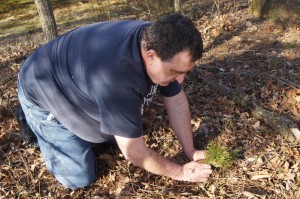
Dendrolycopodium obscurum (Ground-pine)
This is the part where we get down and dirty. We need to collect enough of the plant to make a representative sample so that we can make a correct determination. We write the information about the collection into our field book.

We now place the specimen in between newspaper sheets. The newspaper sheets serve as a protector and storage medium for the specimen until we mount it.

Arranging the plant on the newspaper sheets is an important step because it determines the shape of the plant as it dries. We make sure the flowers are not hidden behind leaves and that leaves are fully extended and visible, among other things.
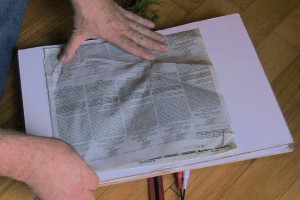
After arranging the specimen the way we want, we place the specimen wrapped in the newspaper sheets in the plant press.
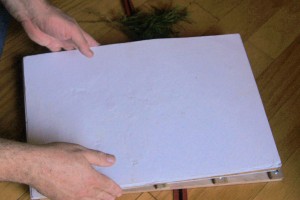
The newspaper sheets with the specimens are cushioned in the plant press by heavy white cardboard sheets. Sheets made for this purpose are available from herbarium supply companies. When I first started collecting 40 years ago, I used building felt cut to fit in the press instead.
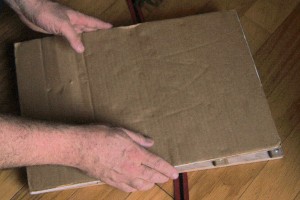
The next layer is corrugated cardboard. These are used as ventilation to facilitate the drying process. Sheet cut to fit in the plant press can be purchased from herbarium supply companies. The sheets can also be made by cutting up cardboard boxes if you are ambitious and are lucky enough to have a good supply of boxes.

Next we tighten up the press after making sure the specimens, the newspaper sheets, and cardboard sheets are evenly stacked.
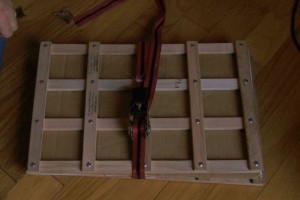
After the press is tightly buckled, we let the specimens dry. This can be done at room temperature. The process can be speeded up by forcing air through the press and heating the air up to no higher than 113° F (45° C). Any warmer than that, the specimen will dry too quickly and may turn black.
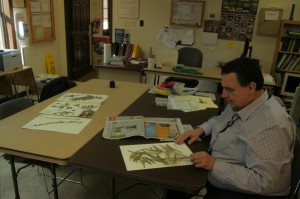
At this stage we look at the specimen to confirm a determination of a species name for the specimen. Sometimes this is an easy process, but other times because of name changes, etc. If we can not make a good determinations, we send the specimens to experts who specialize in plant groups.

We mount the specimens on white cardboard designed for this purpose. They are sturdy and make of archival paper. They are attached to the sheets with tape and glue and bulkier items can be literally sewn on to the sheets.
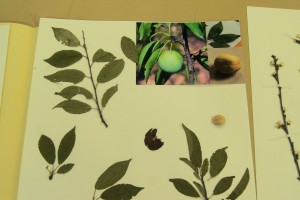
This is the final product with a label containing the collection information. Recently, some collectors place photographs of the specimens on the sheet. The photographs are generally taken at the time of collection in the field. Among other things, the photographs preserve a fresh look of the specimens in the field. The specimen mounted are then placed in folders which are in turn stored in herbarium cabinets. A list of the specimens is tabulated and will be used to make a flora for the refuge.
